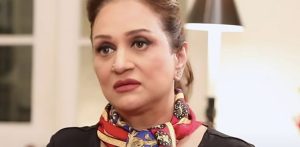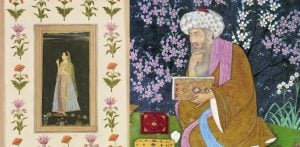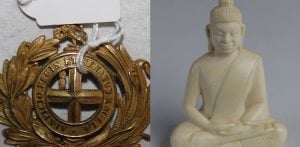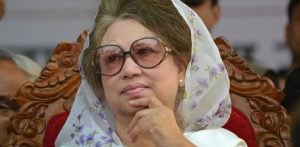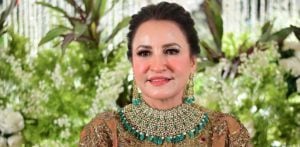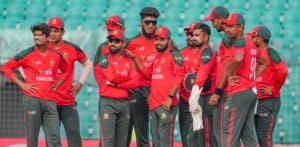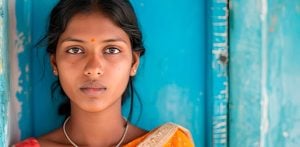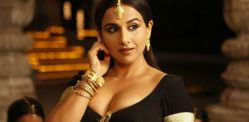Phulkari’s lasting strength is its ability to encompass diverse realities.
Phulkari is Punjab’s very essence, meticulously stitched in lustrous silk threads.
Regions of Punjabi women have encoded their emotions, rituals, and profound identities with each deliberate stitch.
Once intimately linked to family milestones, this vibrant art now commands global recognition.
It graces international fashion collections, esteemed museum galleries like the V&A, and significant cultural exhibitions.
Its true significance transcends striking visuals, residing in its capacity to document Punjab’s intricate social and emotional fabric across centuries.
Born in domestic spaces, nurtured by oral tradition, and dynamically adapted, Phulkari remains a potent link between eras.
Its journey from humble handspun cotton to sophisticated haute couture eloquently reflects both enduring tenacity and remarkable artistic evolution.
The Origins of Phulkari
 Phulkari’s genesis lies not in royal ateliers but within unassuming village homes.
Phulkari’s genesis lies not in royal ateliers but within unassuming village homes.
Here, women meticulously embroidered by hand, guided by ancestral memory rather than drawn patterns.
This precious skill passed from mother to daughter through quiet observation and ingrained shared practice, not through formal instruction.
The earliest tangible evidence and literary references to Phulkari date back many centuries.
The epic Heer Ranjha by Waris Shah underscores its pivotal importance in Punjabi wedding ceremonies.
Some scholars interpret descriptions in ancient texts like Banabhatta’s 7th-century Harshacharita as referring to similar needlework.
Traditionally, Phulkari was never a commodity for sale. It was pure affection rendered in textile form, created to sanctify births, marriages, and pivotal life events.
This made it as much a ritualistic observance as an artistic endeavour.
Types and Regional Nuances
 Phulkari is not monolithic; it encompasses diverse styles with distinct purposes.
Phulkari is not monolithic; it encompasses diverse styles with distinct purposes.
The Bagh, meaning “garden,” features all-over embroidery, so dense it completely obscures the base khaddar cloth.
Chope shawls, typically red with golden-yellow embroidery, are gifted by the maternal grandmother to the bride, symbolising blessings.
Sainchi Phulkari, now rare, is particularly fascinating for its figurative depictions of village life, local characters, and fauna.
Regional variations, with distinct colour palettes or motif preferences in West and East Punjab before 1947, reflected local ecosystems and cultural subtleties.
Technique, Motifs and Memory
 Crafted using a simple darning stitch from the fabric’s reverse, Phulkari’s artistry lies in its painstaking precision and narrative capacity.
Crafted using a simple darning stitch from the fabric’s reverse, Phulkari’s artistry lies in its painstaking precision and narrative capacity.
The coarse, hand-spun khaddar cloth, often indigo-dyed, provides a stark canvas.
This allows untwisted silk floss threads (pat) in vibrant colours like crimson, gold, and emerald to achieve maximum brilliance.
Each hue carries deep cultural resonance: red signifies auspiciousness and love, yellow denotes prosperity, and green represents fertility.
Motifs draw from the agricultural environment and daily existence: wheat stalks (abundance), peacocks (beauty), and geometric patterns reflecting cosmic order or household items.
Without stencils, women stitched their hopes, sorrows, and aspirations directly into the textile.
Phulkari thus became a canvas for both skilled artistry and deeply personal narratives.
Social and Cultural Value
 Phulkari was profoundly integral to a Punjabi woman’s existence, accompanying her from birth until death.
Phulkari was profoundly integral to a Punjabi woman’s existence, accompanying her from birth until death.
Embroidery often began when a girl was young, with pieces gradually accumulating to form part of her wedding trousseau (daaj).
These heirlooms were potent markers of family honour, social standing, and profound maternal affection.
Beyond material symbolism, the collective act of creating Phulkari fostered strong communal ties.
Women stitched together in trinjans (social gatherings), singing folk songs (tappe), sharing stories, and forging vital support networks.
During periods of separation or solitude, needlework offered solace and a sense of purpose.
For many, it was the primary creative outlet within a traditionally patriarchal social structure.
Even today, families meticulously preserve Phulkaris not merely for their aesthetic appeal but for the ancestral memories they embody.
The Shadow of Partition
 The 1947 Partition of Punjab dealt a severe blow to Phulkari traditions.
The 1947 Partition of Punjab dealt a severe blow to Phulkari traditions.
Communities were violently uprooted, and families were tragically separated from ancestral lands and established cultural practices.
Many skilled artisans were displaced, leading to an undeniable loss of specific regional styles and generational knowledge.
The intricate networks of patronage and material supply were severely disrupted.
However, refugee women carried their needles and skills across the newly drawn border.
In the difficult resettlement camps and unfamiliar new homes, Phulkari became a poignant link to their lost past.
It was an act of cultural defiance and continuity, a way to rebuild identity amidst profound trauma.
Reinvention in Fashion and Art
 As Phulkari transitioned from private domestic spaces to wider public consciousness, its unique aesthetic captivated designers and artists.
As Phulkari transitioned from private domestic spaces to wider public consciousness, its unique aesthetic captivated designers and artists.
Brands began adapting the embroidery for contemporary clothing, including jackets, sarees, stoles, and even footwear.
Renowned designers such as Ritu Kumar were instrumental in popularising Phulkari on national and international runways, introducing it to a new audience.
Contemporary labels like 1469 in Chandigarh creatively fuse traditional motifs with modern urban silhouettes, ensuring relevance.
In the visual arts, Phulkari techniques inspire mixed-media works, installations, and even digital interpretations by artists seeking to explore its graphic potential.
These innovations are not mere stylisations; they represent significant efforts to sustain cultural relevance through adaptation.
They ensure Phulkari continues to resonate with diverse audiences without diluting its core identity.
Economic and Social Uplift
 Modern Phulkari revivals have also become powerful instruments for socio-economic advancement.
Modern Phulkari revivals have also become powerful instruments for socio-economic advancement.
Numerous NGOs and women-led cooperatives across Punjab and Haryana are dedicated to training new generations in the craft.
These initiatives provide sustainable incomes while safeguarding this intricate skill.
Organisations like The Nabha Foundation actively support artisan clusters, creating vital links to national and international markets.
This offers women financial autonomy and greater artistic control over their work.
The communal embroidery circle thrives, now often serving as a model of female solidarity and entrepreneurship.
This grassroots production also champions authenticity, providing a crucial counterpoint to mass-produced imitations.
Phulkari thereby provides sustenance, visibility, and an expressive medium for its makers.
Challenges and the Future
 Despite concerted revival efforts, Phulkari faces ongoing challenges.
Despite concerted revival efforts, Phulkari faces ongoing challenges.
The number of hereditary artisans proficient in the most complex, older styles is diminishing.
Competition from faster, cheaper machine-made imitations threatens market viability for meticulously handcrafted pieces.
Ensuring fair wages and consistent market access for rural artisans, particularly women, remains a continuous struggle.
Sustaining the supply of authentic raw materials, like pure silk pat and quality khaddar, is also crucial for maintaining traditional integrity.
However, dedicated researchers, designers, and community leaders are working to document and digitise old patterns.
They also focus on skill upgradation to meet contemporary quality standards and design sensibilities.
The future of Phulkari depends on a collective appreciation for its handmade essence and the stories woven into its fabric.
Phulkari’s lasting strength is its ability to encompass diverse realities.
It merges devotional custom with modern design, personal keepsake with commercial product.
It represents rural artistic practice yet possesses a truly global presence.
Its remarkable transition from intimately embroidered heirloom to celebrated cultural icon mirrors the very spirit of Punjab.
This spirit is tenacious, deeply artistic, and boundless in imagination.
As artists and communities continue to reinterpret Phulkari for new generations, they do far more than preserve a craft; they actively extend a rich, dynamic legacy.
In every meticulously placed stitch lies a narrative, and in every completed piece, a fragment of Punjab’s indomitable heart.


